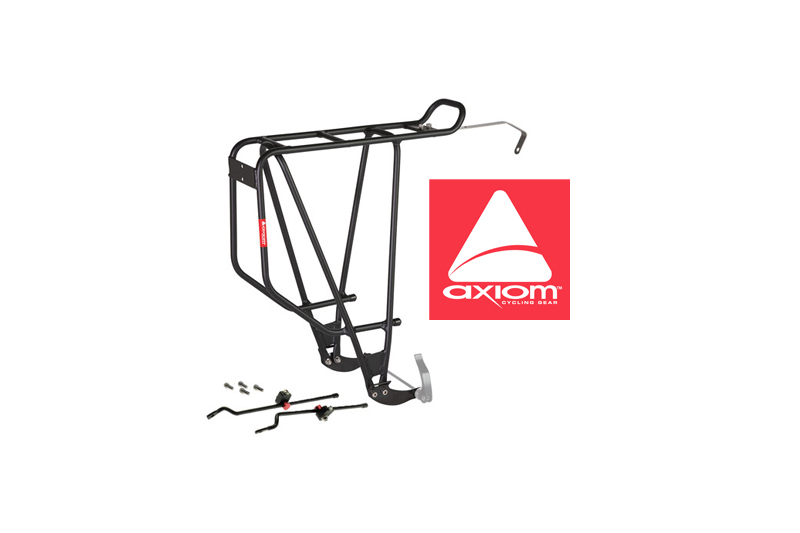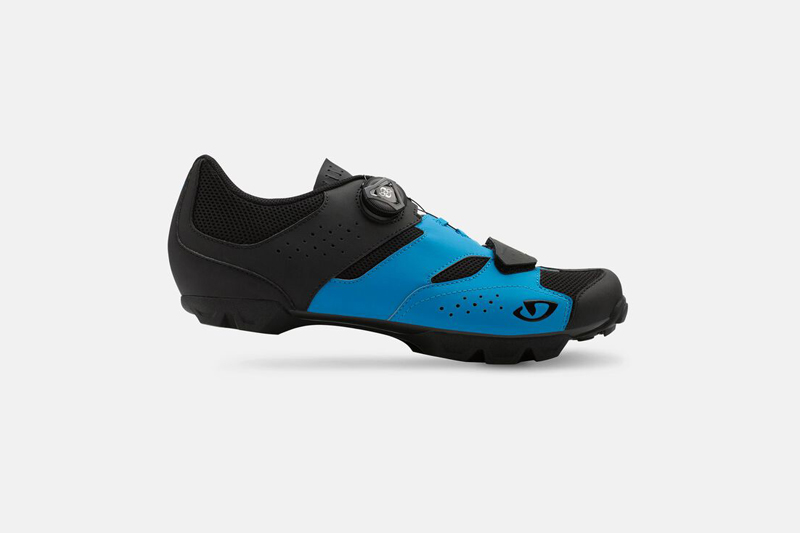Giro Privateer Review
Giro Privateer Ratings
Summary
Giro’s Privateer cycling shoes aren’t perfect, but combining their popularity among consumers, competitive price, functionality, durability, and must-have features, they offer a ton of value for the money.
-
Comfort
-
Price
-
Adjustability
-
Durability
-
Traction
-
Breathability
-
Overall Value
Pros
- Competitive price
- Composite tread delivers excellent traction on a variety of surfaces, with aftermarket toe spikes available for added traction
- Footbed offers a nice balance between stiffness and flexibility, making them versatile on and off the bike
- Ratching and Velcro straps provide detailed micro-adjustments based on your needs and preferences
- Scuff guards and reinforced toe boxes are great additions over earlier versions, which improve durability and foot protection
- High overall marks from online cyclists
- Giro is a reputable company in business for 30+ years, and who stands behind their shoes with a 60-day comfort guarantee
Cons
- The soles toward my toes wore down to nothing on my original versions, which hasn’t occurred yet on my updated Privateers
- Footbed is more flexible than strict racing shoes
User Review
( votes)I tested two versions of Giro’s Privateer bike shoes across thousands of miles. Here, we’ll discuss what I experienced and what this could mean for you.
About the Giro Privateer Cycling Shoe
The Giro Privateer trail shoe continues to rate highly among all kinds of cyclists. After all, it comes with a third-party price well under $100. And, whether you ride urban, gravel, singletrack, or anything in between, it delivers a lot of bang for the buck. Like what?
Core features include welded and stitched microfiber uppers for maximum breathability, rubber toe guards for durability, composite (nylon and rubber) outsoles, molded EVA footbeds, and oversized tread lugs for aggressive traction.
Combining this affordability and functionality, the Giro Privateer also seems to meet many cyclists’ needs, based on its mostly positive online customer feedback. But, is it necessarily the right bike shoe for you?
I’ve ridden the two most recent versions across several years and thousands of miles in just about every climate, condition, and surface type. Here, I’ll outline my experience so you can make a more informed decision.
First, let’s take a look at the different Privateer models available.
Giro Privateer Mountain Bike Shoe Models
Giro offers a total of three shoes in their Privateer lineup, each of which is available in sizes EU 39 (US 6.5) through EU 48 (US 13.5). All come with the company’s 60-day comfort guarantee.
Privateer R MTB SPD Shoes
The Privateer R is manufactured from 100% manmade materials, including a high-quality, breathable microfiber upper. Total weight for EU size 42.5 (US 9.5) is 375 grams and available color combinations include Black/Gum, Blue Jewel, and Dark Shadow/Dark Red.
You’ll find a robust, micro-adjustable ratcheting buckle mechanism mounted toward the top of the foot, with two replaceable straps secured through offset D-rings toward the midfoot zones.
Scuff guards are also in place outside the midfoot area place, while reinforced toe boxes deliver protection and resistance against premature wear. Giro indicates the Privateer R’s compound rubber lugs provide excellent traction and shed mud efficiently, and the company sells a steel toe spike kit ($15) that you can mount underneath the toe for added traction.
Giro also advertises that the Privateer R’s outsoles are stiff, which optimizes power transfer and pedaling efficiency, while the EVA footbeds offer medium arch support and the Aegis antimicrobial treatment helps prevent unwanted odors.
Together, the website tells us that these shoes offer superior fit, excellent performance, and outstanding comfort—even for hard riding and racing, without breaking the bank.
Privateer R HV
Giro’s Privateer R HV is functionally and aesthetically identical to the classic version, just with extra volume for riders who have wide feet or a high instep. It’s also only available in the Black/ Gum color combination.
This increased size also adds 10 grams compared to the classic, bringing the EU size 42.5 (US 9.5) to an overall weight of 385 grams.
Privateer Lace
Giro advertises that their Privateer Lace model “combines the familiar comfort of our Empire™ shoes with the durability of our acclaimed Privateer mountain bike shoes.”
Aesthetically, the Lace model looks more akin to the Privateer than the Empire, since it boasts the same microfiber upper, nylon sole and aggressive lug pattern, and scuff guards and reinforced toe boxes.
The most significant difference is that instead of the ratcheting mechanism and Velcro straps, the Lace model—as its name suggests—features a closure that uses tubular laces to withstand regular use while retaining a knot while you’re riding.
Together, Giro advertises the Lace, which is available in Black, Bright Red/Dark Red, or Olive/Gum colors, delivers a “broken-in feel that won’t break down.” Weight (size 42 EU) comes in at 355 grams.
With these basics in mind, let’s take a look at how the Privateer performs in the real world.
My Long-Term Experience With Giro’s Privateer Shoes
I’ve ridden Giro’s Privateer R shoes for more than three years. In this time, I’ve worn two different versions (see below) across four bikes, thousands of miles and in just about every terrain and condition.
My original pair featured the Black/Gum color combination, while my newer versions come with a Dark Shadow/Orange combo (now discontinued), which I purchased from REI on closeout in January 2018.
Overall? They’re not perfect, but I’m a big fan. I’ll outline the pros and cons below:
Tread Design & Durability
The nylon and rubber composite used on the Privateer’s tread provides reliable traction in most conditions and on most surfaces (except ice, although I haven’t added toe spikes). My Crank Brothers cleats are inset enough that I don’t have to worry about clicking around or causing them premature wear.
However, on my first Privateer Rs, the front portion of the tread (extending from the balls of my feet to the toebox) wore the fastest. So fast, that the tread eventually wore down to nothing, leaving my cleats and the shoe’s toe screws mostly exposed.
Admittedly, I almost certainly surpassed their ideal replacement date, and I haven’t noticed the same trend occurring on my newer pair.
Privateer R’s Sole
Giro advertises the Privateer as a competent performance/race shoe, which I’ve mainly found holds true after riding the older and newer versions in various events.
However, if you’re expecting an utterly rigid sole like a traditional race shoe, I’ve found that the Privateer’s allows meaningfully more flex. In my opinion, it remains stiff enough that it transfers most of my power output to the pedals, while allowing more flex when unclipped, whether I’m walking on chunky trails in the wilderness or on sidewalks while bar-hopping.
Straps & Ratcheting Mechanism
The ratcheting mechanism and straps are easy to use, after initially putting them on, as well as when clipped into my pedals during riding.
I appreciate the ratchet strap’s micro-adjustments, which I’ve mainly found provide a more accurate fit around the ankle. On the other hand, the Velcro straps near the midfoot and toes tend to flex a bit more.
I tend to experience hot spots and sole cramps on longer rides, and I’ve learned that wearing my Privateers at the looser end of the spectrum helps prevent most of these from occurring. In other words, I’ve found it’s easy to dial these shoes in to meet my preferences.
Like most shoes, you’ll need to readjust your straps on longer rides, though, especially after moving around on the ground.
Fit & Comfort
Like most bike shoes, my Privateers were stiff out of the box, but have loosened up comfortably after extended use. Still, they deliver my ideal level of support.
Inside, the cushioning provided by the padding is more than sufficient. In my original Privateers, holes formed at the inside of each heel, which is relatively normal for any of my shoes (bike-related or otherwise). I haven’t experienced this yet on my newer pair.
Bringing all of this together, might you expect to experience much of the same? Let’s wrap everything up in the next section.
My Bottom Line About Giro’s Privateer Shoes
Some cyclists wear different shoes depending on the bike they’re riding, or even based on the weather or other conditions. Not me.
Instead, I’m a one-pair-of-bike-shoes type of person. Whether I’m blissing out during an epic singletrack day, riding on mixed terrain over dozens of miles, cruising city streets, or running a couple of quick errands, the same pair of shoes joins me.
Which is perhaps the biggest reason I continue buying Giro Privateers—they’re ridiculously versatile. They also don’t look too shabby, hold up reasonably well to abuse, tuck cleats away nicely and prevent them from becoming damaged, don’t slip easily, and are comfortable even after sitting in the saddle for 100+ miles.
If you hold more of a race-oriented mindset, though, their more flexible sole might not meet your preferences. And although I’ve used them during multiple 3-4 day gravel tours, their nylon/rubber tread compound probably isn’t beefy enough for extended bikepacking, or for extended use chunky terrain that requires a fair share of hike-a-bike.
Outside of these, I think you might be hard-pressed to go wrong with the Giro Privateers. And if you’re one of the relatively few who aren’t satisfied, the company stands behind them with a 60-day comfort guarantee.
|
Ready to buy? Consider clicking the link
to the right. Why? As an Amazon Associate, TreadBikely earns from qualifying purchases, which helps support our mission. Learn more here. |
Keep rolling: Walz Caps Review



